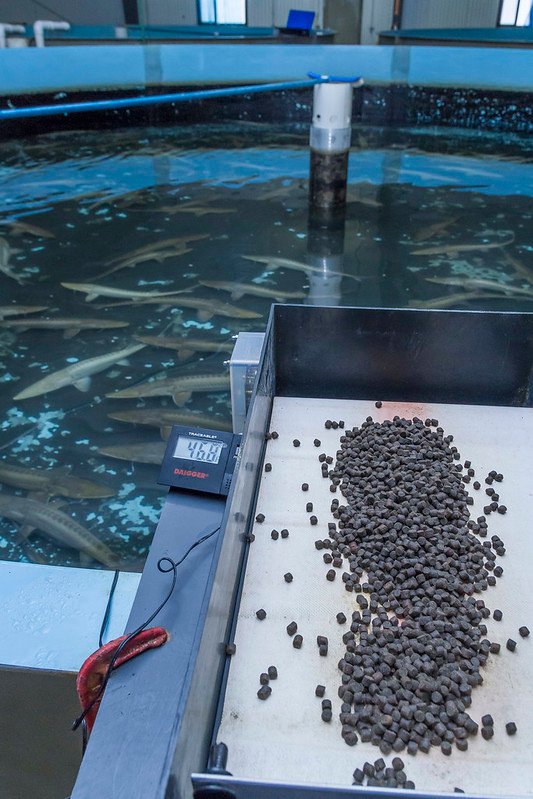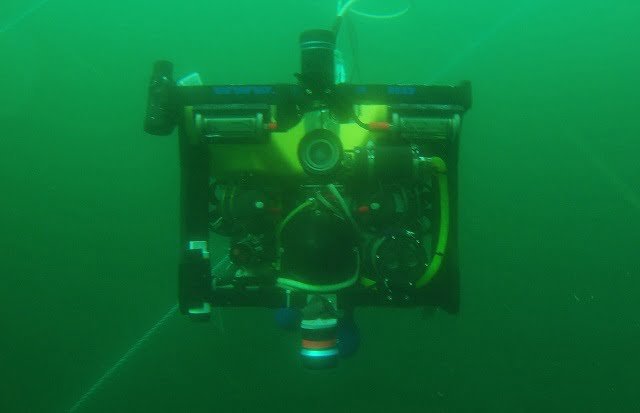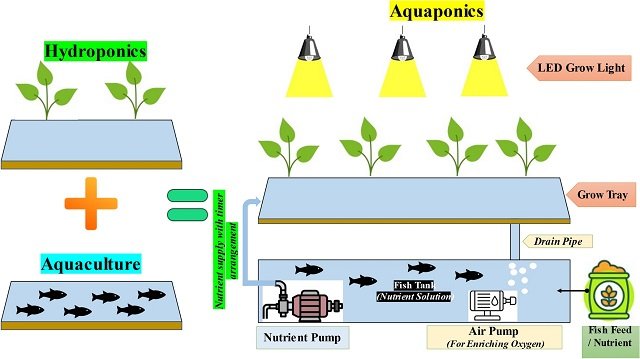Madrid, Spain.- Researchers from Universidad Politécnica de Madrid and University of Florence are developing a bio-inspired robot equipped with special chemical sensors able to detect the pH of water.
A group of researchers from Centre for Automation and Robotics (CAR CSIC-UPM) in collaboration with researchers from University of Florence are designing autonomous underwater vehicle with biosensors to monitor water quality. These robots, that mimic a swimming fish in order to minimize the fish disturbance and stress, can detect in-situ real-time anomalies and this is suitable to control environmental conditions in fish farms.
Aquaculture has become the fastest growing animal food sector in the world. Today, the production of fish, crustaceans and shellfish supplies around fifty percentages of all fish that is consumed by humans globally. In order to keep aquaculture systems at an optimal level and to avoid physiological stress and disease of fish, water quality and adequate nutrition must be monitored and controlled.
In order to tackle this problem, researchers from Bio-inspired Systems Lab at CAR UPM-CSIC, a joint centre between Universidad Politécnica de Madrid and the Spanish National Research Council, in collaboration with researchers from the Chemical Department of University of Florence (Italy) are developing an autonomous underwater vehicle with biosensor to provide real-time and on-site monitoring of water quality in fish farms.
In order to minimize the inconveniences and possible stress in fish, the developed robot is bio-mimetic, that is, that mimics both its appearance and its functioning. In addition to providing water data, the robotic fish is also able to modify the way they swim according to the water conditions with the purpose of, for example, to detect and highlight the areas of concentration. Because water acidity directly affect other indicators both water quality and fish health, researchers have developed a special electrochemical pH sensor based on polyaniline film electrochemically deposited on the graphite screen-printed electrode surface. Thanks to this, the robotic fish is able to change its swimming patterns according to the information sent by this sensor.
The overall length of the fish is 30 cm without including the tail. The prototype adopts shape memory alloys actuators that bend a continuous flexible structure (the backbone of the robot fish), made of polycarbonate of 1 mm thickness. An additional structure of ribs was employed to support the latex-based skin.
According to Claudio Rossi, a developer of this bio-inspired fish, “thanks to this system that provides early information on environmental change, we can control the parameters of water quality and improve management decisions of fish farms, and consequently, the wellness of these animals.”
Stay Always Informed
Join our communities to instantly receive the most important news, reports, and analysis from the aquaculture industry.
Reference:
Andrea Ravalli, Claudio Rossi, Giovanna Marrazza. Bio-inspired fish robot based on chemical sensors. Sensors and Actuators B: Chemical, 2017; 239: 325 DOI: 10.1016/j.snb.2016.08.030
http://www.sciencedirect.com/science/article/pii/S092540051631262X
Editor at the digital magazine AquaHoy. He holds a degree in Aquaculture Biology from the National University of Santa (UNS) and a Master’s degree in Science and Innovation Management from the Polytechnic University of Valencia, with postgraduate diplomas in Business Innovation and Innovation Management. He possesses extensive experience in the aquaculture and fisheries sector, having led the Fisheries Innovation Unit of the National Program for Innovation in Fisheries and Aquaculture (PNIPA). He has served as a senior consultant in technology watch, an innovation project formulator and advisor, and a lecturer at UNS. He is a member of the Peruvian College of Biologists and was recognized by the World Aquaculture Society (WAS) in 2016 for his contribution to aquaculture.




